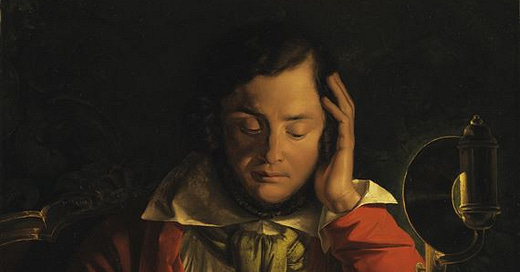Okay, you know that list of readable histories I just posted? Yeah, I completely blanked on one book that should have been on the list. I thought about it afterwards and went looking for it on my shelf…only to find it wasn’t there. I must have sold it at some point (for shame!). I pretty much have to add it to the list. Since, however, I cannot justify another post for only one book, I will add a few bonus selections as well. Cheers!
Natalie Zemon Davis, The Return of Martin Guerre (Harvard UP, 1983, 162 pp.)
Davis is one of the great historians of early modern Europe—maybe one of the great academic historians, period. Her little book on the story of Martin Guerre was so popular it was made into a film starring Gerard Depardieu. If you don’t know, Martin Guerre was a Frenchman who went off to war, and disappeared for several years, before one day he returned to his wife and his village. But then years later a man with a wooden leg showed up in the village claiming to be Martin Guerre. It came out in court that the man with the wooden leg really was Martin Guerre, and the man who had been living in the village was a peasant named Arnaud du Tilh. The case was a sensation across Europe, and the case is so fascinating that a general reader will definitely be engrossed. But you will also get to see a great historian at work, who uses the case to illuminate the social tensions in France during a turbulent era.
Bonus Picks
(These are all very good, but they are mostly about religion, especially Catholicism, FYI)
*Martin Marty, Martin Luther: A Penguin Life (Penguin, 2004, 224 pp.)
Marty was a prominent Lutheran theologian, and this is a very readable introduction to the life of Martin Luther, penned for Penguin’s Lives series. Marty was a kind of middle of the road Lutheran who didn’t necessarily love his subject, but he is a good scholar and though it is not the best biography of Luther in my opinion, it is the best for an introduction to Luther and for a general reader who may not be familiar with the theological background of his life.
*Lady Antonia Fraser, The King and the Catholics: England, Ireland, and the Fight for Religious Freedom, 1780-1829 (Nan A. Talese, 2018, 336 pp.)
Fraser is a biographer and historian who has written dozens of biographies and histories, mostly concerning the early modern period. This book concerns the path of “Catholic Emancipation” in Britain between the dates indicated in the title. In early modern Britain, Roman Catholics suffered under legal disabilities (inability to hold office, vote in elections, worship publicly, among others) though by the late eighteenth century most of the actual legal persecution had abated. Fraser narrates the campaign to end these legal disabilities, beginning with the infamous Gordon Riots of 1780, the worst riots in British history, in which a deranged nobleman led mobs attacking Catholic houses and even killing their occupants. Catholic Emancipation became a reality in 1829, thanks to the efforts of men like Daniel O’Connell, “the Great Emancipator” in Ireland. Fraser is a good writer and makes a compelling story out of this historical episode.
*Philip Lawler, The Faithful Departed: the Collapse of Boston’s Catholic Culture (Encounter Books, 2008, 280 pp.)
Philip Lawler is a veteran Catholic journalist who has written for numerous publications, but is a Bostonian by birth and heritage. This book recounts the rise and fall of the Catholic Church in Boston from the nineteenth century to the sexual abuse scandals of the early 2000s. Lawler is a good writer and this is a very easy read. However, I must warn readers that Lawler is like myself, a traditional Roman Catholic, and his explanation for the collapse of Catholicism in Boston presumes that a rejection of Catholic teaching on things like sexuality is a prime reason for that collapse. If that is too much to handle, you might want to demur. However, if you want to see how that might sound in the hands of a veteran journalist who knows how to communicate clearly, I highly recommend Lawler’s book. (I should also note that it is not an academic history and so contains no footnotes or list of sources.)



